Active shooter response is a term used to describe the various stages that law enforcement and first responders go through when dealing with a shooting situation.
When a person is actively shooting people, first and foremost, the goal is to stop the attack as quickly as possible. This means engaging the shooter as soon as possible to prevent more casualties.
Depending on the situation, law enforcement may try to take down the shooter or evacuate nearby civilians. We will be discussing the different phases of active shooter response and how you can respond to an active shooter event to survive.
Following the seven steps, we have outlined will give you a better chance of surviving a shooting event. We hope this blog helps you stay safe and protect yourself from danger.
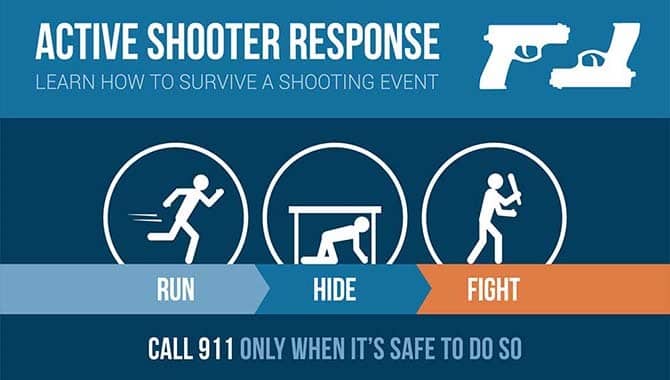
What Is Active Shooter Response?
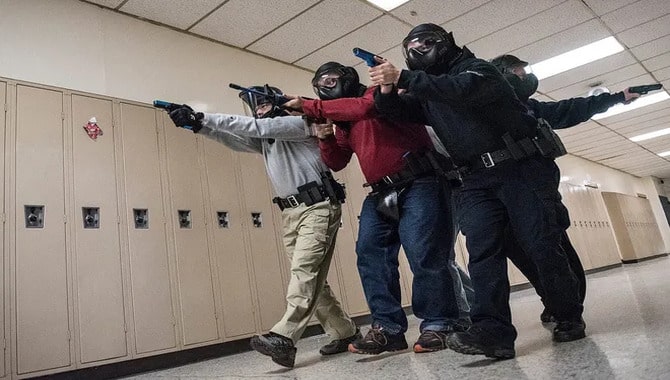
Active shooter response is a strategy law enforcement and first responders use to respond to an active shooter situation.
It involves line officers trained in confronting and neutralizing the threat. Various methods are available to incapacitate or kill the gunman, including shooting, stabbing, and using stun grenades or pepper spray.
Key elements of effective active shooter response include effective communication, coordination, training, and preparation. Following these key principles, law enforcement and first responders can successfully neutralize the threat and save lives.
Active Shooter Response – Learn 7 Steps To Survive A Shooting Event
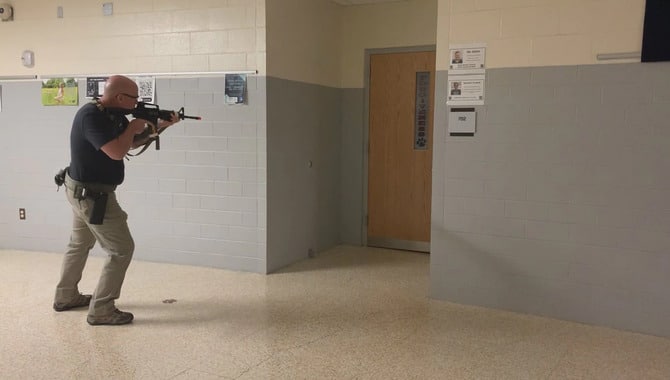
Active shooter response is a term that refers to the strategies and tactics that law enforcement and other emergency responders use when they encounter an active shooter. These are terrifying and can be life-threatening. If you are ever in the situation, know there are steps you can take to survive.
Step One: Establish Communication With Law Enforcement
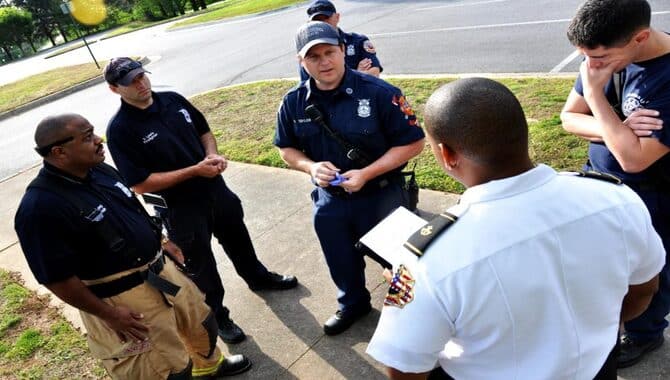
The first step in a shooting situation is to communicate with local law enforcement. This will help ensure that all responders are on the same page and that the best course of action is taken. Often, dispatchers can provide key information about the shooter and their location, which can help respond quickly.
Step Two: Coordinate Response Efforts
Now that law enforcement has been contacted and knows about the situation. It’s important to coordinate response efforts between agencies. This includes mobilizing personnel from affected areas and gathering information about the shooter and their surroundings.
Step Three: Isolate The Shooter
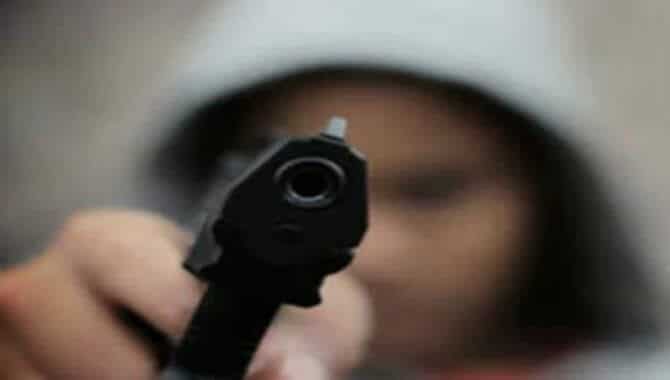
Law enforcement must isolate the gunman to minimize casualties and protect innocent civilians. This includes using active tactics such as gunfire, drawn weapons, or pepper spray to force them back or hinder them.
It’s also important to communicate with other responders so that they know where the gunman is located and what kind of resistance they may be facing.
Step Four: Depersonalize Shooting Events
When faced with a mass shooting situation, it can become difficult for officers to separate themselves from those involved. This can lead to increased casualties and a decreased chance of neutralizing the gunman. Officers must always maintain their composure, regardless of the situation.
Step Five: Respond With Caution

When encountering a shooter, it is always best to proceed with caution. This means avoiding sudden movements and staying as calm as possible to avoid triggering an attack. Officers should also train on basic self-defense tactics for active shooter situations.
Step Six: Evacuate Civilians
Once law enforcement has successfully isolated the gunman, it’s important to evacuate any civilians that may be in danger.
This includes moving them to a safe location away from the shooter and any active gunfire. Unless instructed otherwise, officers should not enter the scene and instead stand back and provide support.
Step Seven: Monitoring The Situation

Law enforcement must continuously monitor the shooting event to ensure everyone is safe. This includes tracking down any additional gunmen or explosives and responding with updated information as it becomes available.
Active shooter response is a difficult and dangerous task, but officers must prepare in case of an event like this. Following these steps can ensure a safe outcome for themselves and those around them.
The Different Phases Of Active Shooter Response
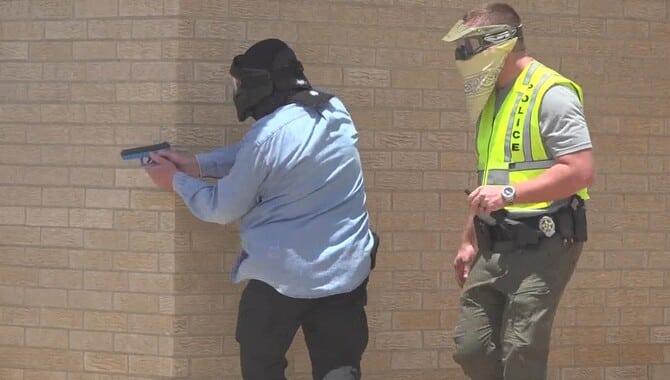
The active shooter response is a complex and rapidly changing process that requires swift and decisive action to save lives. During the first phase, you should stay hidden and avoid being seen. If you can take down the shooter, the next phase will be arriving at the scene as quickly as possible.
During this stage, you’ll need to help evacuate people and secure injured victims before responding to any additional calls for assistance.
Make sure you are well-prepared by learning the different phases of active shooter response and staying up-to-date with the latest developments. By doing so, you can make a significant difference in the outcome of a shooting event.
How To Respond To An Active Shooter Event?
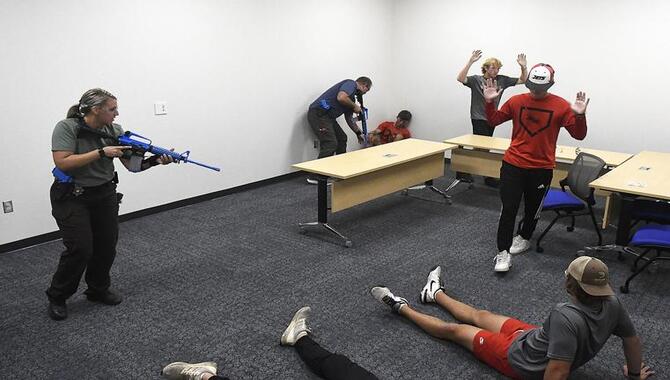
If you’re ever in the unfortunate situation of being confronted with an active shooter, there are a few things that you need to know to survive.
The first thing that you should do is to take cover. This means finding somewhere safe to hide that will protect you from gunfire and provide you with some protection. You may also want to try and barricade yourself into a room or cabinet if possible. Once you’re safe, the next step is ensuring everyone in your area is also safe.
This means calling for backup, evacuating people as quickly as possible, and keeping everyone calm while the situation unfolds. Remember: the most important thing is to stay alive until the police arrive. They’ll be able to handle the rest.
Tips For Staying Safe During An Active Shooter Event
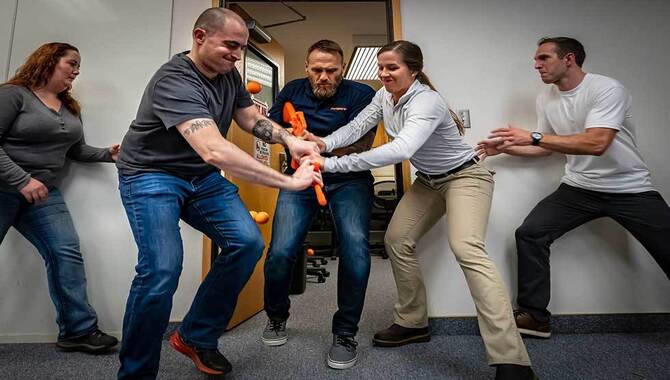
Active shooter events are terrifying, and staying safe can be difficult. If you’re in an area where an active shooter is active, it’s important to leave immediately. Hide if possible – find a secure place to hide that’s out of view. If you can’t do any of those things, stay calm and quiet as possible.
When emergency responders arrive, they’ll be able to provide you with vital information that you may not know otherwise. However, here are a few tips that may be of help:
– Stay aware and keep your head up. Be aware of your surroundings and what’s happening around you. If something looks suspicious, don’t hesitate to report it to authorities.
– Run if you can. If an active shooter is in a building or somewhere where escape is possible, try to run as quickly as possible away from the scene. Sprinting will help increase your chances of survival.
– Hide if possible. If there’s nowhere to run or hide, try to barricade yourself in a room or closet until the authorities arrive. Don’t be afraid to use any objects around you – even chairs – as makeshift shields from bullets.
– Stay calm and composed under pressure. It can be difficult not to panic when faced with an active shooter situation, but staying calm will help keep you focused and minimize your chances of making mistakes that could lead to injury or death.
Conclusion
Active shooter response is a complex and rapidly evolving field. As such, it’s important to keep up with the latest developments to respond effectively in an emergency.
If you’re ever in an area with a potential active shooter, the best thing to do is stay calm and quiet. Try to identify the shooter yourself or find someone who can help you. If you can’t do either, your best bet is to barricade yourself in a room and call for help.
Active shooter response is a well-known emergency response plan to neutralize an active shooter situation. We will teach you the basics of active shooter response and discuss its different phases.
We will also give tips on staying safe during an active shooter event and what to do if you are in danger. Stay tuned for more information on how to survive a shooting event.
Frequently Asked Questions
1.What Should I Do If I’m In A Building When An Active Shooter Is Present?
Ans: If you’re in a building when an active shooter is present, the best thing to do is hide! Conceal yourself as best you can and stay calm. Remember, you’re more likely to make mistakes if you can’t think straight. Once you understand the situation, assess how best to protect yourself.
If there’s a way out, take it – even if it means running through gunfire. If you find yourself in a situation where you can’t escape, try using any weapon to fight back. Remember, anything that can save your life during a shooting event is worth considering.
2.How Can I Protect Myself And Others From Being Shot?
Ans: Knowing what to do in an active shooter situation is one of the best ways to protect yourself from being shot. If you are in a room with someone else, staying calm and hiding is the most important thing you can do.
Find a spot where you can barricade yourself inside a small room or closet and put duct tape over all the doors and windows. If there’s no way out, barricade yourself inside as best as possible. Remember: guns may use against you instead of for target practice.
3.What Tips For Reuniting With Loved Ones After An Active Shooting Event?
Ans: In the aftermath of an active shooting event, it is important to follow the basic safety guidelines to stay safe. These include escaping the area, staying calm, and seeking help from authorities or security. If you separate from loved ones, identify yourself as a victim and seek help from authorities/security.
Try to find shelter if possible – preferably underground or in a room with concrete walls. Remain calm under pressure and think about what will keep you alive until help arrives.
4. Should I Call 911 Or Report The Incident To The Authorities?
Ans: The decision of whether or not to report an incident can influence by various factors. However, you should consider some things before deciding: Has the shooter been discharged from the hospital yet? If so, is he or she still active and dangerous? – Has the shooter harmed anyone else?
If so, how? Are any hostages being held? Is the shooter still in the area? – Remember that your actions may have consequences.
You may be helping law enforcement apprehend the shooter by reporting the incident. However, you may also be putting yourself and/or others at risk. It’s ultimately up to you to decide whether or not to call 911.
5.What Should I Do If Someone Else Injures Me During A Shooting Event?
Ans: If you get injured during a shooting event, the priority is to stay calm and assess the situation. Remember, it is much more likely that you will kill if you try to confront the shooter. Instead, try to find cover if possible and avoid being seen by the shooter.
If you can’t escape or hide, try to distract or incapacitate the shooter as best as possible. Above all, avoid getting shot yourself.

Leave a Reply